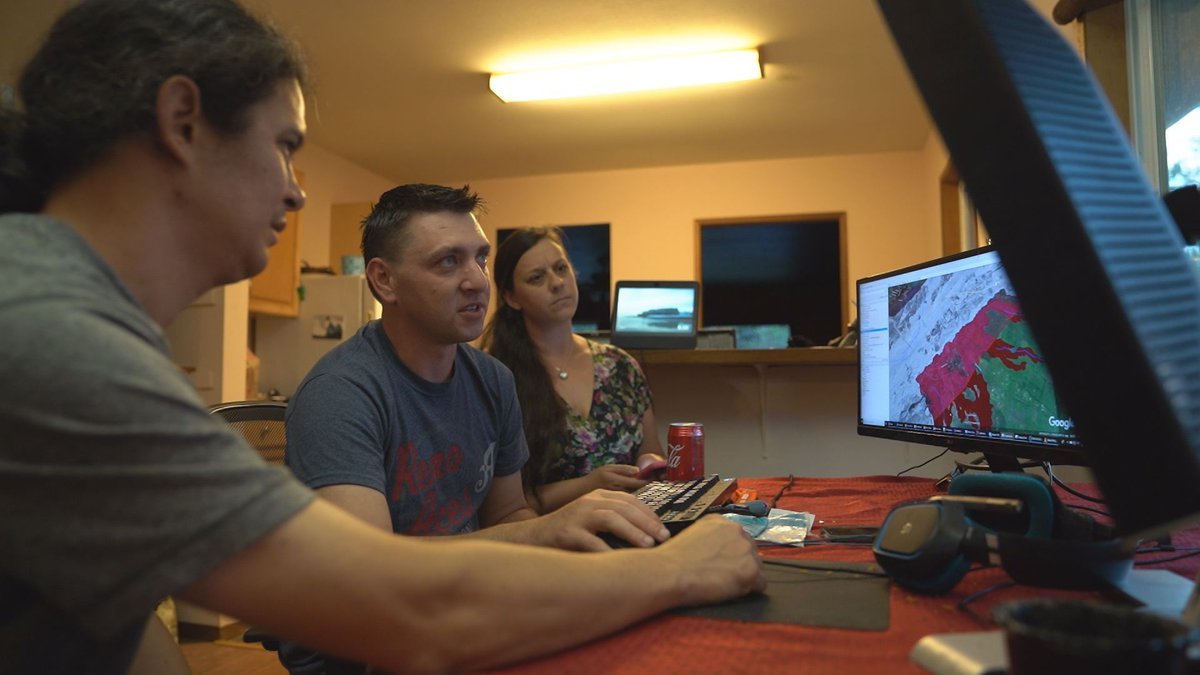
About HVERI
HVERI is a nonprofit organization emerging from the 2018 eruption of Kīlauea volcano.
IRS-designated 501c3, EIN 88-4235317
We aim to improve disaster preparedness, response, and recovery through volcano education, resilience network building, and youth development.
“The interviews we did during the eruption, the most fun ones were the ones with Philip and Dane because they were more relaxed, and we knew we were getting to the local community and people were asking questions. So those were the best for our ability to communicate.”
— Dr. Ken Hon, Scientist-In-Charge of the USGS Hawaiian Volcano Observatory, on Hawaiʻi Tracker’s work during the 2022 Maunaloa eruption
During the 2-week long Maunaloa eruption, Hawaiʻi Tracker produced 66 written articles, 20 short videos, and 20 live videos, including 6 broadcasts with the Mayor of Hawaiʻi County, typically joined by the USGS Hawaiian Volcano Observatory Scientist-In-Charge and the Hawaiʻi County Civil Defense administrator, as well as interviews with the Base Commander for the US Army Garrison at Pohakuloa and gas scientists with the Vog Mapping and Prediction Program. Altogether, the Mauna Loa outreach resulted in a total reach of 1,701,420 views with 374,531 engagements.
Our Operations
HVERI operates year-round in either normal mode or disaster mode, with education and information as its primary means to positively impact communities on the Island of Hawaiʻi, especially those most at risk of volcanic impact near the rift zones of Mauna Loa and Kīlauea. Further benefits to local communities stem from education of visitors drawn to the volcano that promotes responsible, non-invasive tourism, cultural awareness, and stewardship.
The end goal is to improve coordination, collaboration, and preparedness in times of crisis, ultimately leading to more effective and efficient response efforts and a faster recovery. This draws upon the concept of resilience hubs as spaces that adapt to the changing needs of the community and activate in times of disaster to support emergency response and recovery efforts.
Volcano Education Program
Weekly content production, extra during eruption alerts: written articles, short videos, and live video broadcasts
Live streaming and recording of informational meetings by public agencies such as the USGS Hawaiian Volcano Observatory, Hawaiʻi County Civil Defense, State of Hawaiʻi, or Hawaiʻi Volcanoes National Park
Special topical interviews with experts and officials, such as the Hawaiʻi County Mayor, HVO scientists, and gas scientists from the Vog Mapping and Prediction Program
In-person outreach events at community forums such as Activate Puna and Revitalize Puna in Pāhoa with Hawaiʻi County, Resilience Hub fairs in Hilo, Nanawale and Waimea with Vibrant Hawaiʻi, and eruption preparedness meetings in Ocean View, Pāhala and South Kona with the USGS-HVO
Our Programs
Digital Resilience Program
Management of the Hawaiʻi Tracker network, highlighted by the Facebook Group with over 119,000 members
Digital Resilience Hub framework for other community-based social media groups to replicate successes, including training & certification
Social Media Moderation Training Program for digital responders in disasters
Collaboration with Vibrant Hawaiʻi Resilience Hubs to create robust digital communications in support of disaster response
Artificial Intelligence (AI) training for community members, collaborating organizations and nonprofits
Youth Development Program
Workshops, outreach booths, mentorship & internships
Follows published youth development models to achieve key developmental outcomes of competence, confidence, connection, character & compassion with greatly increase young people’s chances to overcome severe stress & high-risk conditions.
Volcano Education Traveling Toolkit with STEAM activities at outreach events island-wide to introduce families to our programs improving disaster education & preparedness; now appearing at Science Night at local elementary schools!
Aloha AI Watchtower project began as mentorship for University of Hawaiʻi-Hilo computer science students & continues through volunteerism
Internship in digital production with support from Big Island Press Club & UH-Hilo, Spring 2024, piloted content production & distribution in youth-oriented formats & platforms.



